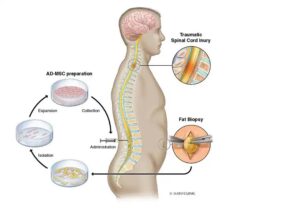When families think about medical malpractice during childbirth, they often focus primarily on the actions of obstetricians and other physicians. However, obstetric nurses play an equally crucial role in ensuring safe deliveries and preventing birth injuries. These healthcare professionals serve as the front line of patient care during labor and delivery, continuously monitoring both mother and baby, recognizing warning signs, and advocating for timely interventions when complications arise. Understanding the responsibilities of labor and delivery nurses, and what happens when they fail to meet the standard of care, is essential for families affected by preventable birth injuries.
The Multifaceted Responsibilities of Labor and Delivery Nurses
Obstetric nurses carry tremendous responsibility throughout the birthing process. Unlike physicians who may rotate between multiple patients or arrive primarily for the delivery itself, labor and delivery nurses typically provide continuous bedside care, making them uniquely positioned to identify developing problems before they become emergencies. Their duties extend far beyond basic patient comfort and encompass critical clinical assessments that can mean the difference between a healthy birth and a devastating injury.
One of the most important responsibilities of obstetric nurses is continuous fetal monitoring. Modern labor and delivery units rely heavily on electronic fetal monitoring systems that track the baby’s heart rate and the mother’s contractions. While these machines generate data automatically, it takes a trained professional to interpret the patterns and recognize signs of fetal distress. Nurses must understand what constitutes normal heart rate variability, identify concerning decelerations, and know when patterns indicate the baby is not tolerating labor well.
When troubling patterns emerge, nurses bear the critical responsibility of promptly notifying the attending physician and documenting their observations and communications. Delays in this chain of communication can have catastrophic consequences, as even brief periods of oxygen deprivation can cause permanent brain damage. Families seeking information about conditions like cerebral palsy that result from oxygen deprivation during birth often turn to resources such as Cerebral Palsy Guidance to understand how these injuries occur and whether negligent monitoring played a role.
Maternal Monitoring and Complication Recognition
Beyond fetal monitoring, obstetric nurses must vigilantly assess the mother’s condition throughout labor. They monitor vital signs including blood pressure, pulse, and temperature, watching for signs of dangerous conditions like preeclampsia, eclampsia, infection, or hemorrhage. Rising blood pressure combined with other symptoms can signal life-threatening complications requiring immediate intervention.
Nurses also assess the progress of labor, performing cervical examinations to determine dilation and the baby’s position and station in the birth canal. Recognizing when labor fails to progress normally is crucial, as prolonged labor increases risks for both mother and baby. Similarly, nurses must identify signs of cephalopelvic disproportion, when the baby is too large to safely pass through the mother’s pelvis, and communicate these concerns to the physician before an emergency develops.
The management of labor augmentation and pain medication also falls within the nurse’s scope of responsibility. When Pitocin is administered to strengthen contractions, nurses must carefully monitor both the dosage and the patient’s response, as excessive uterine stimulation can compromise blood flow to the baby. Improper Pitocin administration is a common factor in birth injury cases, and families dealing with the aftermath of such negligence often consult with specialists at firms like Birth Injury Lawyer to understand whether the standard of care was breached.
The Chain of Command and Duty to Advocate
One of the most complex aspects of a labor and delivery nurse’s role involves navigating the medical hierarchy when they believe a physician is not responding appropriately to a deteriorating situation. Nurses have a professional and ethical duty to advocate for their patients, which sometimes means escalating concerns up the chain of command when the attending physician fails to act on troubling developments.
This duty to advocate creates a challenging dynamic. Nurses must balance professional courtesy and workplace relationships with their primary obligation to patient safety. When a nurse observes concerning fetal heart rate patterns and notifies the physician, but the physician dismisses the concern or delays responding, the nurse must decide whether and when to escalate to a supervisor, department head, or other authority. Failure to pursue this chain of command when necessary can constitute negligence on the nurse’s part, even if the ultimate decision-making authority rests with the physician.
Documentation becomes particularly critical in these situations. Nurses must meticulously record their assessments, the timing and content of communications with physicians, and any instructions or decisions made. These medical records often become the primary evidence in birth injury litigation, and comprehensive resources like the Birth Injury Justice Center help families understand how to interpret these documents and identify potential gaps in care.
Emergency Response and Intervention
When emergencies arise during labor and delivery, obstetric nurses must be prepared to respond immediately with appropriate interventions. Shoulder dystocia, a complication where the baby’s shoulders become lodged behind the mother’s pubic bone, requires swift recognition and execution of specific maneuvers to free the baby and prevent nerve damage. Nurses trained in these techniques play a vital role in guiding the team through the emergency.
Similarly, when fetal distress necessitates an emergency cesarean section, nurses must mobilize the surgical team and prepare the patient for surgery within minutes. The standard in many hospitals calls for the ability to perform an emergency C-section within 30 minutes of the decision to operate, though some situations require even faster response times. Any delay in this process can result in oxygen deprivation and permanent injury.
Umbilical cord prolapse represents another obstetric emergency where nursing intervention is crucial. When the umbilical cord slips into the birth canal ahead of the baby, it can become compressed, cutting off the baby’s oxygen supply. Nurses must recognize this emergency immediately, take measures to relieve pressure on the cord, and ensure the patient is rushed to the operating room for an emergency delivery.
The complexity and high stakes of obstetric nursing have made this a specialized area of medical malpractice law. Major firms focusing on birth injuries, such as JJS Justice, regularly handle cases involving nursing negligence alongside or instead of physician malpractice.
Standards of Care and Professional Accountability
Obstetric nurses are held to specific standards of care established by professional organizations, hospital policies, and state nursing practice acts. The Association of Women’s Health, Obstetric and Neonatal Nurses (AWHONN) publishes evidence-based practice guidelines that define the standard of care for labor and delivery nursing. These guidelines cover everything from fetal monitoring interpretation to emergency response protocols.
When nurses deviate from these established standards, whether through action or inaction, and a birth injury results, they may be held liable for medical malpractice. Common examples of nursing negligence in obstetric settings include failure to properly monitor and interpret fetal heart rate patterns, delays in notifying physicians of concerning developments, medication errors, failure to recognize and respond to complications, inadequate documentation, and failure to follow hospital protocols for emergency situations.
Proving nursing negligence requires demonstrating that the nurse’s actions fell below the accepted standard of care and that this deviation directly caused or contributed to the injury. This typically requires expert testimony from other obstetric nurses who can explain what a competent nurse should have done under the same circumstances. Experienced legal teams, such as those at Miller and Zois, work with medical experts to carefully analyze nursing care and determine whether breaches in the standard of care occurred.
Shared Liability in Birth Injury Cases
In many birth injury cases, responsibility is shared among multiple healthcare providers and potentially the hospital itself. A physician may make poor decisions about the management of labor, but nursing staff may also fail to properly communicate deteriorating conditions or advocate for necessary interventions. In other situations, excellent nursing care may be undermined by a physician who ignores warnings or delays responding to emergencies.
This concept of shared liability means that birth injury lawsuits often name multiple defendants, including individual nurses, the employing hospital, and one or more physicians. Hospitals can be held vicariously liable for the negligence of their employed nurses under the doctrine of respondeat superior. They may also face direct liability for inadequate staffing, failure to implement proper protocols, or deficient training of nursing staff.
Understanding how liability is apportioned among different parties requires sophisticated legal analysis. Each defendant’s insurance carrier will typically seek to minimize their client’s responsibility by pointing to others’ failures. Skilled attorneys specializing in birth injury litigation, such as those at Levin & Perconti, navigate these complex multi-party cases to ensure that all responsible parties are held accountable and families receive full compensation for their child’s injuries.
The Importance of Nursing Ratios and Hospital Resources
Beyond individual nursing competence, systemic factors significantly impact the ability of obstetric nurses to prevent birth injuries. Nurse-to-patient ratios in labor and delivery units directly affect the quality of care. When nurses are assigned too many patients, they cannot provide the continuous monitoring and immediate response that safe obstetric care requires. A nurse juggling multiple laboring patients may miss subtle warning signs on a fetal monitor or experience delays in responding to emerging complications.
Hospital policies regarding breaks, meal periods, and mandatory overtime can also compromise patient safety. Nurses working double shifts or forced to skip breaks due to inadequate staffing may experience fatigue that impairs their clinical judgment and reaction time. When hospitals fail to maintain appropriate staffing levels or create working conditions that compromise nursing care, they may bear direct liability for injuries that result.
Similarly, hospitals must provide adequate equipment, functioning monitoring technology, clear protocols, and ongoing training for their nursing staff. Equipment failures, outdated protocols, or insufficient training can all contribute to preventable injuries even when individual nurses are trying their best to provide competent care.
Taking Action After a Birth Injury
When families suspect that nursing negligence contributed to their child’s birth injury, understanding the role nurses should have played becomes an important part of evaluating the case. Medical records will contain nursing notes, fetal monitoring strips, and documentation of communications with physicians, all crucial evidence for determining whether the standard of care was met.
Families should not assume that only physician error can give rise to a medical malpractice claim. Nursing negligence is a legitimate basis for legal action, and in many cases, nurses’ failures to properly monitor, communicate, or intervene are the critical factors that allowed a preventable injury to occur. Consulting with experienced birth injury attorneys who understand both the medical and legal complexities of obstetric nursing care is essential for families seeking answers and accountability.
The role of obstetric nurses in preventing birth injuries cannot be overstated. These dedicated professionals serve as the constant presence at the bedside, the interpreters of monitoring data, the communicators of concerns, and often the first responders when emergencies arise. When they fulfill these responsibilities competently, they are instrumental in ensuring safe deliveries. When they fall short of professional standards, the consequences can be devastating and permanent. Understanding these responsibilities helps families recognize when preventable errors occurred and take appropriate action to secure their child’s future.




